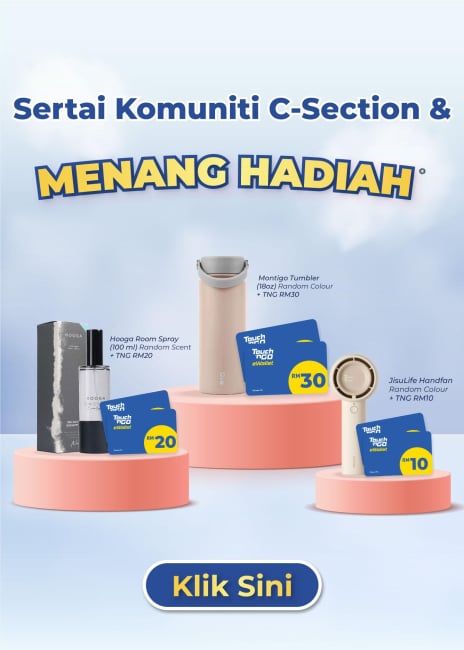Uses
What is Celestoderm® (betamethasone valerate) used for?
Celestoderm® is commonly used for treat skin irritation and itch caused by skin conditions such as eczema, psoriasis, contact dermatitis, and seborrhea.
It works by reducing redness, inflammation, swelling, and irritation of the skin.
How should I take Celestoderm® (betamethasone valerate)?
Cream or ointment:
Apply enough cream or ointment to completely cover the affected area with a thin film. Massage it gently and thoroughly into the skin. This medication is usually applied once daily in the morning, or twice daily (in the morning and at night) as directed by the doctor. The treatment should be stopped when the condition is cleared. The medication should not be continued for a period longer than 4 weeks without further consultation with your doctor.
Lotion:
Apply a few drops of lotion or enough to thinly cover the affected area. The lotion should be gently massaged into the area until it disappears. The lotion is usually applied once or twice.
Wash your hands after applying this medication unless you are treating your hands.
Shake the lotion well before applying it to the affected area.
Do not cover the area with an occlusive dressing (a dressing that doesn’t breathe) unless your doctor tell you.
Avoid applying the medication in or near the eyes.
How do I store Celestoderm® (betamethasone valerate)?
Celestoderm® is best stored at room temperature away from direct light and moisture. To prevent drug damage, you should not store Celestoderm® in the bathroom or the freezer. There may be different brands of Celestoderm® that may have different storage needs. It is important to always check the product package for instructions on storage, or ask your pharmacist. For safety, you should keep all medicines away from children and pets.
You should not flush Celestoderm® down the toilet or pour them into a drain unless instructed to do so. It is important to properly discard this product when it is expired or no longer needed. Consult your pharmacist for more details about how to safely discard your product.
Precautions & warnings
What should I know before using Celestoderm® (betamethasone valerate)?
Before using this drug, tell your doctor if you:
- Are allergic to betamethasone or any ingredients of the medication.
- Have a skin infection caused by viruses, including herpes simplex, vaccinia, and varicella (chickenpox).
- Have had an allergic reaction to other corticosteroid medications.
- Have untreated infected skin lesions caused by an infection with fungi or bacteria.
- Have tuberculosis of the skin.
Do not apply this medication around the mouth, to the eye, or on or around the anal and genital area.
Is it safe during pregnancy or breastfeeding?
There are no adequate studies in women for determining risk when using Celestoderm® during pregnancy or while breastfeeding. Please always consult with your doctor to weigh the potential benefits and risks before taking Celestoderm®. Celestoderm® is pregnancy risk category C, according to the US Food and Drug Administration (FDA).
FDA pregnancy risk category reference below:
- A=No risk
- B=No risk in some studies
- C=There may be some risk
- D=Positive evidence of risk
- X=Contraindicated
- N=Unknown
Breastfeeding
There are no adequate studies in women for determining infant risk when using this medication during breastfeeding. Weigh the potential benefits against the potential risks before taking this medication while breastfeeding.
Side effects
What side effects can occur from Celestoderm® (betamethasone valerate)?
Check with your doctor immediately if any of the following side effects occur:
- Burning, itching, or stinging at the application site
- Hair loss
- Thinning of the hair
- Blistering, burning, crusting, dryness, or flaking of the skin
- Irritation
- Itching, scaling, severe redness, soreness, or swelling of the skin
- Redness and scaling around the mouth
- Thinning of the skin with easy bruising, especially when used on where the skin folds together (e.g. between the fingers)
Some side effects may occur that usually do not need medical attention. These side effects may go away during treatment as your body adjusts to the medicine. Also, your health care professional may be able to tell you about ways to prevent or reduce some of these side effects. Check with your health care professional if any of the following side effects continue or are bothersome or if you have any questions about them:
- Acne or pimples
- Burning, crawling, itching, numbness, prickling, “pins and needles’, or tingling feelings
- Burning and itching of the skin with pinhead-sized red blisters
- Burning, itching, and pain in hairy areas, or pus at the root of the hair
- Increased hair growth on the forehead, back, arms, and legs
- Lightening of normal skin color
- Lightening of treated areas of dark skin
- Reddish purple lines on the arms, face, legs, trunk, or groin
- Softening of the skin
Not everyone experiences these side effects. There may be some side effects not listed above. If you have any concerns about a side-effect, please consult your doctor or pharmacist.
Interactions
What drugs may interact with Celestoderm® (betamethasone valerate)?
Celestoderm® may interact with other drugs that you are currently taking, which can change how your drug works or increase your risk for serious side effects. To avoid any potential drug interactions, you should keep a list of all the drugs you are using (including prescription drugs, nonprescription drugs, and herbal products) and share it with your doctor and pharmacist. For your safety, do not start, stop, or change the dosage of any drugs without your doctor’s approval.
Products that may interact with this drug, including:
- Itraconazole
- Medications applied to the skin that has irritating effects
- Other topical medications containing corticosteroids
- Natalizumab
- Pimecrolimus
- Ritonavir
- Tacrolimus
Does food or alcohol interact with Celestoderm® (betamethasone valerate)?
Celestoderm® may interact with food or alcohol by altering the way the drug works or increase the risk for serious side effects. Please discuss with your doctor or pharmacist any potential food or alcohol interactions before using this drug.
What health conditions may interact with Celestoderm® (betamethasone valerate)?
Celestoderm® may interact with your health condition. This interaction may worsen your health condition or alter the way the drug works. It is important to always let your doctor and pharmacist know all the health conditions you currently have.
These health conditions may include:
- Cushing’s syndrome (adrenal gland disorder)
- Diabetes
- Hyperglycemia (high blood sugar)
- Intracranial hypertension (increased pressure in the head)
- Infection of the skin or near the place of application
- Large sores, broken skin, or severe skin injury at the place of application
Dosage
The information provided is not a substitute for any medical advice. You should ALWAYS consult with your doctor or pharmacist before using Celestoderm® (betamethasone valerate).
What is the dose of Celestoderm® (betamethasone valerate) for an adult?
Cream or ointment:
Apply enough cream or ointment to completely cover the affected area with a thin film. Massage it gently and thoroughly into the skin. This medication is usually applied once daily in the morning, or twice daily (in the morning and at night) as directed by the doctor. The treatment should be stopped when the condition is cleared. The medication should not be continued for a period longer than 4 weeks without further consultation with your doctor.
Lotion:
Apply a few drops of lotion or enough to thinly cover the affected area. The lotion should be gently massaged into the area until it disappears. The lotion is usually applied once or twice.
What is the dose of Celestoderm® (betamethasone valerate) for a child?
The dosage has not been established in pediatric patients. It may be unsafe for your child. It is always important to fully understand the safety of the drug before using. Please consult with your doctor or pharmacist for more information.
How is Celestoderm® (betamethasone valerate) available?
Celestoderm® is available in the following dosage forms and strengths:
- Celestoderm® V/2 cream 0.05%
- Celestoderm® V cream 0.1%
- Celestoderm® -V ointment 0.1%
- Celestoderm® V/2 ointment 0.05%
What should I do in case of an emergency or overdose?
In case of an emergency or an overdose, call your local emergency services or go to your nearest emergency room.
What should I do if I miss a dose?
It is important to use this medication exactly as prescribed by your doctor. If you miss an application, apply it as soon as possible and continue with your regular schedule. If it is almost time for your next application, skip the missed application and continue with your regular dosing schedule.
Do not apply a double dose to make up for a missed one. If you are not sure what to do after missing a dose, contact your doctor or pharmacist for advice.
[embed-health-tool-bmi]

















